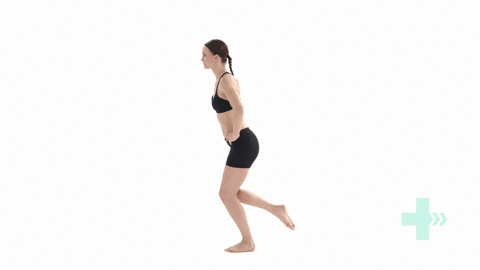Download your free copy of
the best basic exercises for you,
by clicking in the picture
Winter is an ideal time to take a break from competition, but still, the work is not done yet.
Apart from scheduling your next races, buying airline tickets, and setting goals for Kona (thinking of excellent goal achievement in Hawaii), the off-season is the right time for both practicing and recovering.
If you have had any injuries during the last year, it is likely to affect your performance, and this is the time to get evaluated by an experienced therapist.
But as you know, the most important for me is not the cure, but the prevention. For that reason, I have chosen five great exercises for every triathlete and runner to cover the essential aspects of their physical condition.

Static endurance is essential for developing stronger muscle fibers that hold the activity in the long term, for example, in running, swimming, and biking for long distances.
My choice for today is the Swiss ball static squat. This exercise works the length of your maximum contraction and hold. The Swiss ball challenges (and improves!) your balance because it requires you to engage your stabilization muscles.

Plyometric or explosive movements are essential for the fast reactions of the joints when we move, preventing injuries like muscle, tendons, and ligament strains and tears. Squat and jump is a good exercise that works in all these aspects. Remember when you practice this, to combine fast and slow movements forward and backward. If the slow movements are challenging, that's what you need to be focusing on more!

Single leg squat will provide you with the muscle coordination and leg strength as well as the balance portion of running. In my clinic, I have seen many athletes reporting a significant improvement in their run and bike after regularly practicing single-leg squats. It also helps them notice if one leg is stronger than the other.
Dynamic planks are one of my favorites since they challenge so many aspects of your posture and spine/hip stabilization. Planks are regularly practiced by swimmers, proving beyond any doubt that a strong core can help in your swimming performance, making a big difference in your final results.

Changing directions on running is the next exercise on this list. Your body's ability to respond fast to your sudden movements will develop the fast-twitch fibers and the nerve connections to the leg and core muscles, resulting in a faster run with fewer injuries probability. In this video, you can see an excellent example of a 5 cone drills that you can use.
The last and probably the most important is the assisted stretching and PNF technique. I know you try to stretch, but it is not always a priority, and I understand why. It's not easy to do it yourself. That's why I want to help you with that. Twenty minutes full stretching will keep your body in full mobility and good shape.




All you need to do is to schedule your complimentary stretching session online by clicking HERE.

